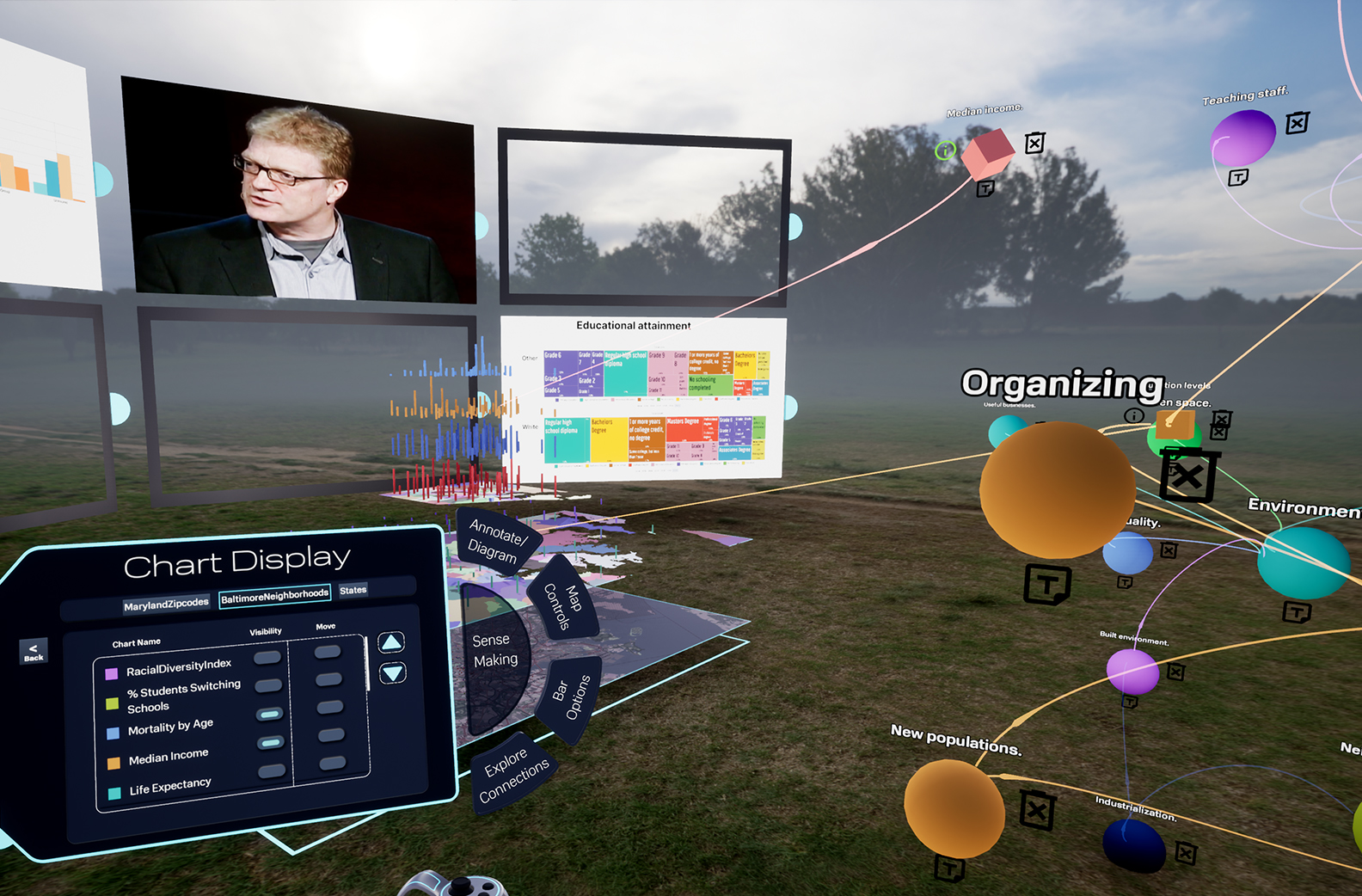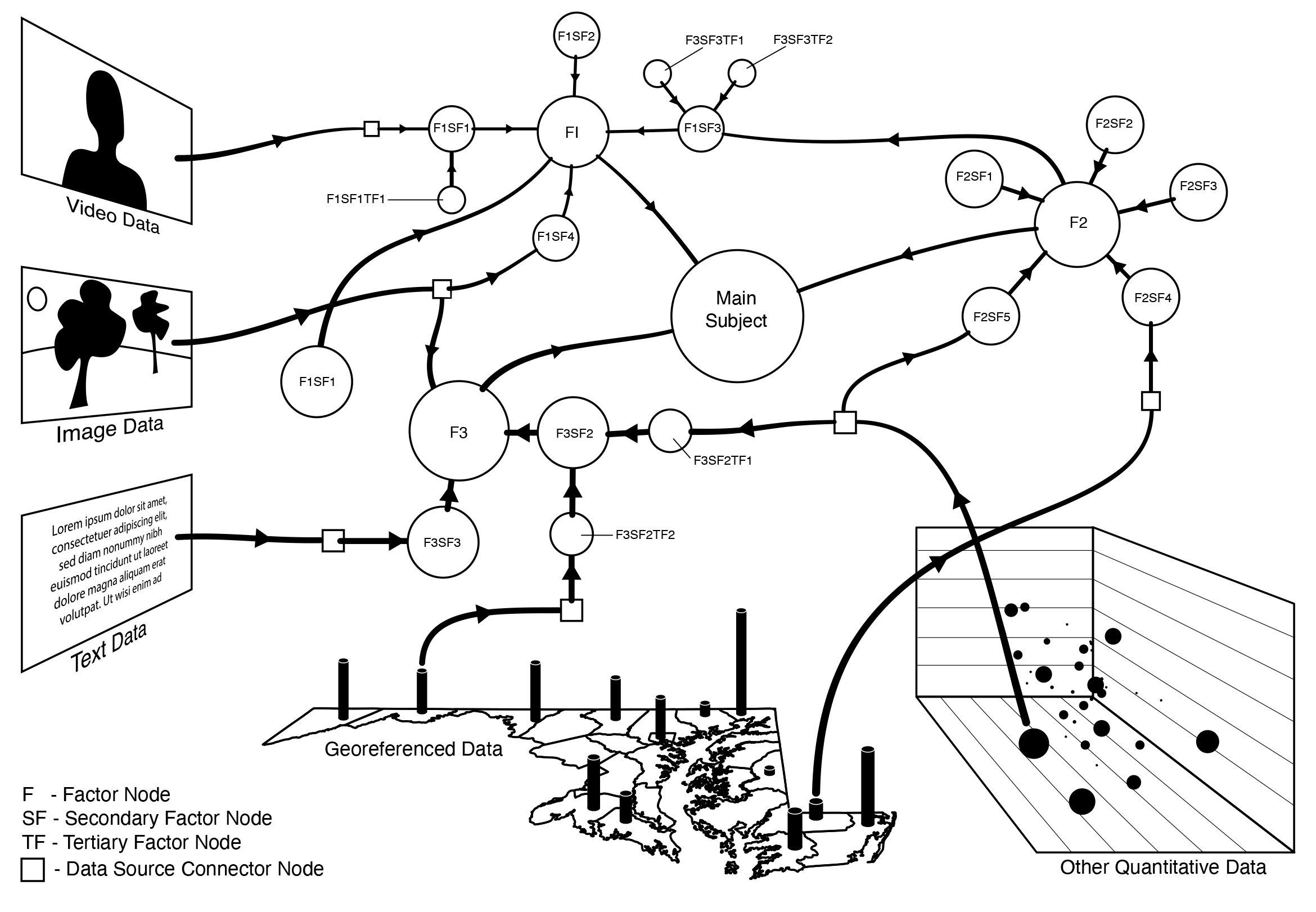
A New Way to Understand Our Most Difficult Societal Challenges
Media shapes not only what, but how we think
REVLR is a new toolset, which we believe will help initiate new practices intended to evolve how we think about our most complex challenges where human beings are part of the dynamic. Everyone understands that we use media as a way to share information, entertain, and connect, but probably fewer of us recognize that the forms our media take (TikTok, movies, podcasts…) and the devices we use to access them, not only reflect, but also shape the way we think. A timely example might be the way social media algorithms favor extreme content, which likely affects when, where, and how each of us thinks about politics and results in a more politically polarized nation. But this becomes an opportunity when you consider that sometimes we want and need to change how we think. For example, when we have challenges that seem intractable—ones for which decades pass without significant progress—it seems promising to reconsider the ways we think about them. Maybe we can do that by changing the forms of media we use to represent these challenges. This logic informs IRC research across the board, but it is the goal of the REVLR project.
Complex, systemic challenges are us
REVLR is three dimensional (3D)visualization software for immersive environments such as VR (virtual reality). It is different than 2D software for building charts and graphs because current 3D graphic displays used in immersive environments heighten perception. If visualizations are properly designed, the nearly unlimited space of 3D environments, seen with high fidelity, head-tracking, stereoscopic display makes it possible to compare larger amounts of visualized data at one time than would be possible in 2D. This is a critical capacity to have in our time because we can, theoretically, for the first time, assemble the full landscape of factors that contribute to the kinds of complex, unsolvable problems (sometimes called “wicked” problems) that emerge from interactions within or among complex adaptive systems (CAD). Consider challenges such as low educational achievement, poverty, obesity, poor public health, gun violence, or climate change. Large businesses face these as well. For example, how do you optimally run a national retail business when the ephemeral winds of culture? For the past few centuries we have increasingly tried to solve such problems by breaking them into separate pieces to work on one-at-a-time. That only works for certain kinds of problems. At some point, the challenges you are left with are the ones that don’t respond to that kind of reductive thinking because they function as a unified, integrated whole, like an ecosystem or complex organism.
A good example of a challenge like this is the COVID pandemic response. Who would have guess that if you were able to beat the odds and come up with effective vaccines, that people would rebel against getting them for cultural and political reasons? The problem of curbing climate change can be seen through a similar lens. REVLR is intended to give people a way—perhaps for the first time—to see such challenges as they truly are. The subject we are currently using as a case study is low reading achievement in elementary school. We are working with Amy Tondreau, of UMBC’s Department of Education, and her students.
Capacities of the REVLR prototype
In addition to increasing the amount of data that can be visualized in order to better represent complex, systemic challenges, we have designed REVLR to handle more kinds of data than typical data visualization applications—particularly qualitative data that is best understood when seen in its raw form, rather than through qualitative analysis alone. We are culturally conditioned to think that data are always quantitative values, but a broader and perhaps better definition of data is simply something that is given, that can be considered in analysis. For example, when you are caught in a rainstorm, you do analysis based on the rain itself as data—no numbers attached—and you run for cover. Video interviews, photographs, other images, and text, can be measured analytically to produce quantitative values, and much can be gained that way, but much can be lost. The tone of expression in someone’s voice; phrasing that refers obliquely to a cultural nuance; the gestalt impression of a scene you can get through a photograph… are all important and can reveal elusive and ephemeral factors that might actually be determining how systems behave. Some refer to those aspects of data as irreducible. But given our increasing capacity to quantitatively measure most anything, perhaps a better way to think about these aspects is to remind ourselves that when you reduce them, you change them. This is part of Heisenberg’s Uncertainty Principle.

Another benefit of REVLR’s design is that people remember things better when they are arranged in space or spatialized—especially in 3D space. People who win memory competitions have to memorize entire decks of cards. To do this, they imagine a place they know—e.g. a building with rooms and furniture and drawers with containers in them, and mentally place the cards throughout their imagined space. Spatial ability is strongly correlated with scientific ability. Large tech companies are making a bet on what Apple calls spatial computing. The second part is still a hypothesis we are testing. We know that creative people often immerse themselves in far more material than they can logically break down or analyze fully to front load their intuitive capacity. For example, the famous Baltimore writer, Ann Tyler is known to collect snippets of conversations she overhears during her day-to-day life until she has a cornucopia of them. Then she spreads them out all over the floor of her house and allows their meaning to wash over her as she walks among, and reads them. Then, her intuition begins to see connections between different conversational snippets and they begin to form into pieces of a story and eventually become a novel. The REVLR research team hypothesizes that juxtaposing more “snippets” (which can be data points and bits of information) than you can process at once, stimulates creative and synthetic high order thinking. As Pee Wee Herman used to say, “Connect the dots, La, La, La!”
REVLR also provides users with a conceptual modeling tool (think 3D bubble diagramming) that they can connect to visualized data in whatever form. This places the emphasis on the thinking that the data produces, rather than just the data itself, and it makes if visible. It allows us to see what we’re thinking but also, given the data connections, understand why.
In short, REVLR is tool designed to help us meet complex systemic challenges by seeing them in space all at once, versus in pieces, over time. We hypothesize that preconceptions about data overload have less to do with how much data we see at once than how we approach analyzing it. After all, a walk in dense woods can be very relaxing.
Researchers and Creators
Investigators:
Concept, Project Direction: Lee Boot, Director of the Imaging Research Center
Evaluation: Anita Komlodi, Associate Director of the Imaging Research Center, Associate Professor of Human-Centered Computing
Lead Software Development: Tristan King, IRC Lead Software Developer;
Visual Asset Production: Ryan Zuber, IRC Technical Director, and Specialist in modeling and animation
Software Development: Kyle Davis, ’22, Computer Science and Electrical Engineering
Graduate and PhD Students
Evaluation: Priya Rajasagi, PhD Student of Human-Centered Computing
Software Development:June Young, Graduate Student, Department of Computer Science and Electrical Engineering
Undergraduate Students
Software Development:
Lilly Mills, Department of Computer Science and Electrical Engineering
Bradley Saunders, ’21, Computer Science and Electrical Engineering
Evan McRae, 25, Science and Electrical Engineering
Interface Design:
Bhargavi Sundar
Tawa Abiwa
Garvit Patwa
Funding
Gift, Robert W. Deutsch Foundation: $50,000
Epic Games: $150,000
UMBC TCF fund: $45,000
Publications, Papers, Presentations
Rajasagi, P., Yekini, M., Kunisetty, S., King, T., Zuber, R. J., Boot, L., … & Komlodi, A. (2023). Comparing and Evaluating Menu Placement for Immersive Virtual Reality. iConference 2023 Proceedings.
Rajasagi, D. P. (2023, March). Immersive Health Data Visualization in Virtual Reality. In 2023 IEEE Conference on Virtual Reality and 3D User Interfaces Abstracts and Workshops (VRW) (pp. 971-972). IEEE.
Included in the exhibit “Abstracts and Artifacts,” at The Peale. Boot, Lee (November 17, 2022 – February 12, 2023).